The Support for Effective Cooperation and Coordination of Cross-border Initiatives in Southwest Ethiopia-Northwest Kenya, Marsabit-Borana & Dawa, and Kenya-Somalia-Ethiopia (SECCCI) is intended to address the drivers of conflict and instability, irregular migration and displacement in the cross-border areas of the Horn of Africa through improved cross-border coordination and cooperation.
The specific objectives of the project are:
- To strengthen regional policy frameworks, structures and protocols for cross-border cooperation between national and local Governments, the private sector, civil society and international technical and financial partners in development;
- Capacities of communities, local governments and civil society to fully engage in processes for development planning and results are built;
- To ensure effective cooperation and coordination, monitoring and evaluation of cross-border initiatives including involvement of relevant national and regional actors in these processes.
The programme is being implemented in the following cross-border areas: (1) Southwest Ethiopia and Northwest Kenya, covering South Omo Zone in Ethiopia, and parts of Turkana and Marsabit Counties in Kenya (Cluster I); (2) Marsabit County, Kenya and Borana and Dawa Zones, in Ethiopia (Cluster II); (3) The Kenya-Somalia-Ethiopia border, covering Mandera County in Kenya, Gedo Region in Somalia, and Dolow ado and Dolo bay woredas in the Somali Regional State of Ethiopia (Cluster III) and (4) Western Ethiopia and East Sudan, covering Benishangul Zone in Ethiopia and the Blue Nile State in Sudan (Cluster IV).
Cross-border work has been severely impacted by the COVID-19 pandemic. As governments scrambled to reduce the spread of the disease, most countries in the IGAD region imposed some form of restriction on movement, particularly of people, as well as goods across borders.
In this first online discussion, we discuss the impact of COVID-19 pandemic on the delivery of our project objectives.
- What are your experiences in delivering services and implementing programmes in cross-border areas during the COVID-19 pandemic?
- How do you think COVID-19 will affect the delivery of your projects?
- What measures have you put in place to mitigate and respond to these challenges? How can other stakeholders support?
The discussion will be moderated by Dr. Gezahegn Aboset the IGAD SECCCI Project Coordinator. It will close on 21 July 2020.
To contribute to the discussion, please log in your names, organization and email address in the comment section below.Your contribution will go into a moderation queue. This is necessary not to vet what you say, but to ensure that we weed out inappropriate and malicious content.
